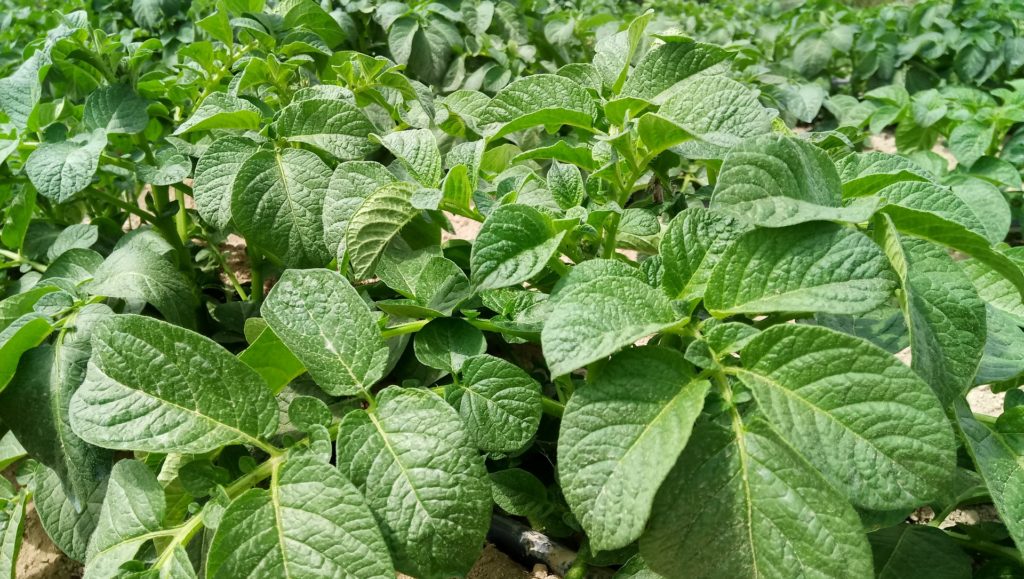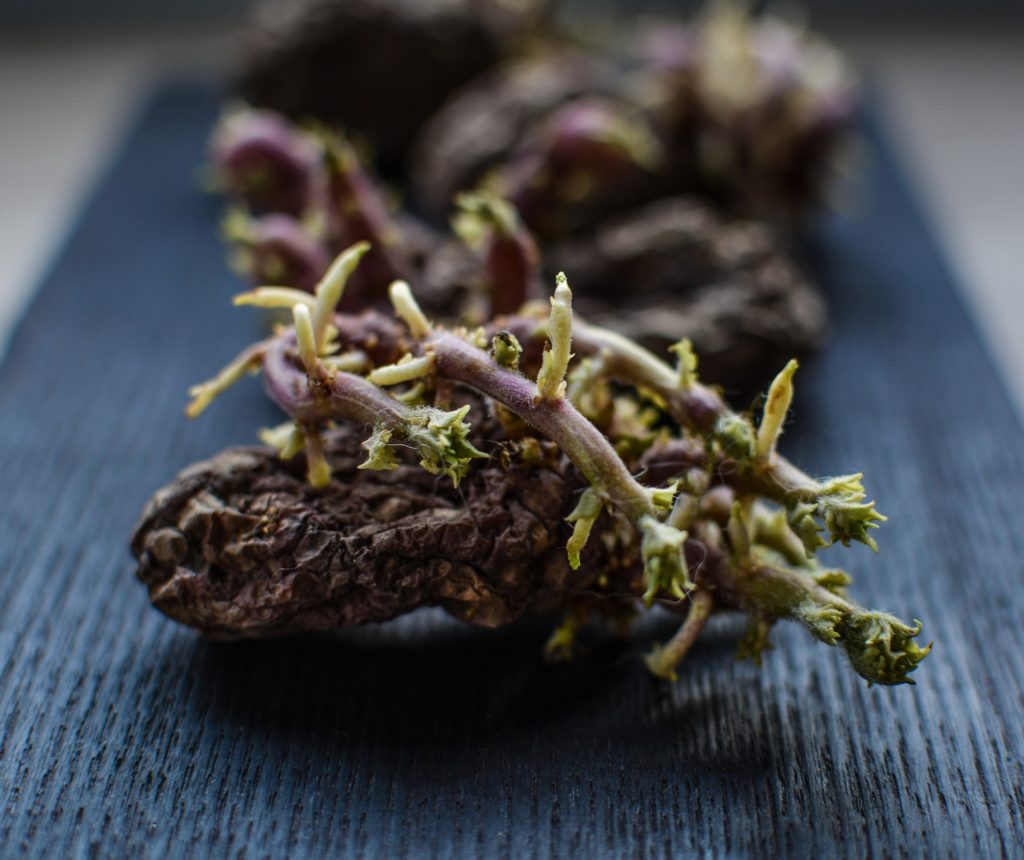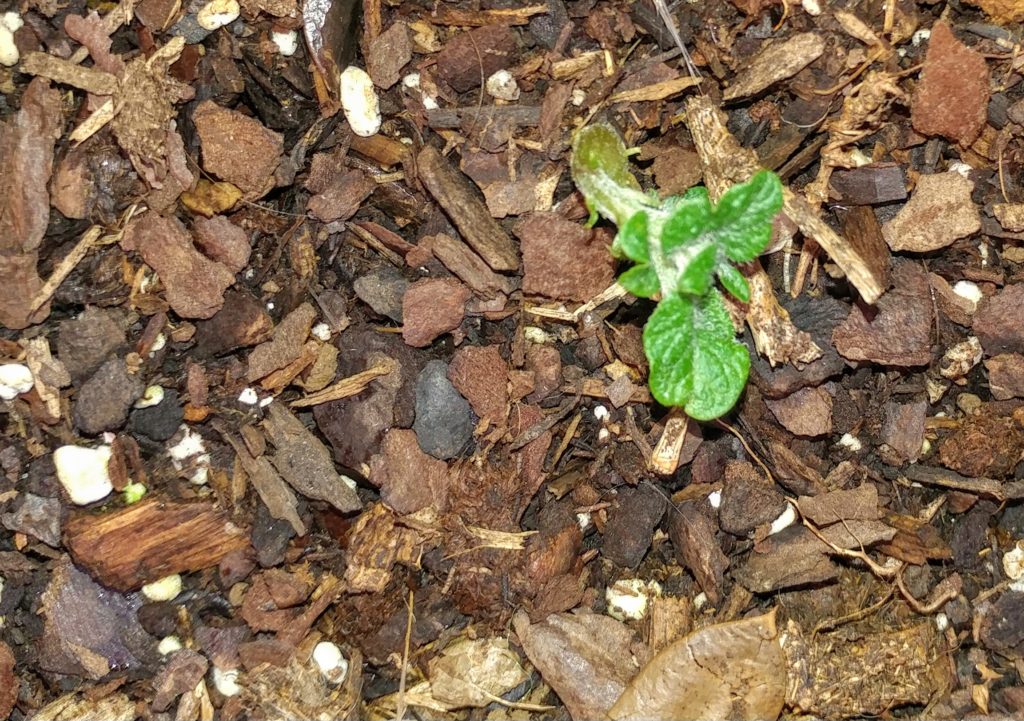Seeing your potato leaves turning black will really scare you quite a bit; especially if your plants looked perfectly fine and healthy yesterday!
Don’t abandon all hope though, because this isn’t exactly a death sentence for your potatoes. This might only stunt growth temporarily, depending on the cause. Let’s dig a little deeper…

Why Are My Potato Leaves Turning Black?
There are a few different problems that could cause blackened leaves on a potato plant, and in this post, we’ll discuss the cause that causes the most black leaf damage: frosts & freezes.
If you think you might be having another issue, we’ll touch base on those briefly below, and link you to some more information, including example photos from other websites and blogs for you to identify the cause of discoloration. It will take some time to build up all of these new pages, so please hang in there while we get all of our posts prepared for you!

Frost & Freeze Damage: Did Temperatures Drop Below 40*F?
If you recently went through a cold night (within the last three days), you might be dealing with some freeze or frost damage. For being a cool weather crop, potatoes are incredibly sensitive to frost damage. Even if you did not have a night at 32*F for a light freeze, you may still have frost damage.
The damage may not be immediately apparent, and every bit of affected foliage will slowly turn brown and black, then wilt. This part of the plant is dead, and this will be very clear as the black foliage quickly begins to decay.

How Can I Have Potato Frost Damage If Temperatures Didn’t Freeze? Are My Plants Dead?
Unfortunately, potatoes don’t require temperatures to hit 32*F to sustain damage from frosts or freezes. A frost can occur even when the forecast temperatures are well above the freezing mark. In addition, the air closest to the ground is sometimes colder than what is recorded or predicted.
When this happens, the water can collect on the leaves of the potato plant, and freeze. If the frost remains long enough, it will cause freeze damage to the plant. As stated previously, all black foliage will begin to decay. However, your potato plants are NOT dead! As long as the soil did not freeze (a great example would be a container grown potato, as they are susceptible to early spring freezes), the tuber will still be alive and well.
You should see new growth within 2 to 10 days of the killing freeze, as the parts of the plant that did not accumulate frost will still be alive. Therefore, the stem and any foliage just below soil level should be green and well.

There Wasn’t Any Cold Weather… What Made My Potato Leaves Turn Black?
If your potatoes didn’t encounter cool temperatures leading to weather damage, then you may have a diseased plant on your hands. This situation will be a lot more serious. While diseases have some characteristic symptoms, they can vary from plant to plant, garden to garden. The reason for this is that other factors may play a part, compounding the damage. For example, a potato that is wilting due to a lack of rainfall may exhibit more extensive or darker damage. Let’s take a look at a few potential problems.
Blight, whether early blight or late blight, will cause discoloration in the leaves. See this example of a plant with blackened edges. This fungal infection slowly climbs through the plant, with leaves paling, darkening at the edges and moving inward. There is no treatment for blight, but you can slow the spread.
Septoria Leaf Spot is another consideration. You will not see entire black areas among the leaves at onset, but you will see some black spotting among yellowing leaves. Stronger, healthier plants will not fall victim as quickly as the younger ones. Therefore, you may see this among your weakest plants most commonly.